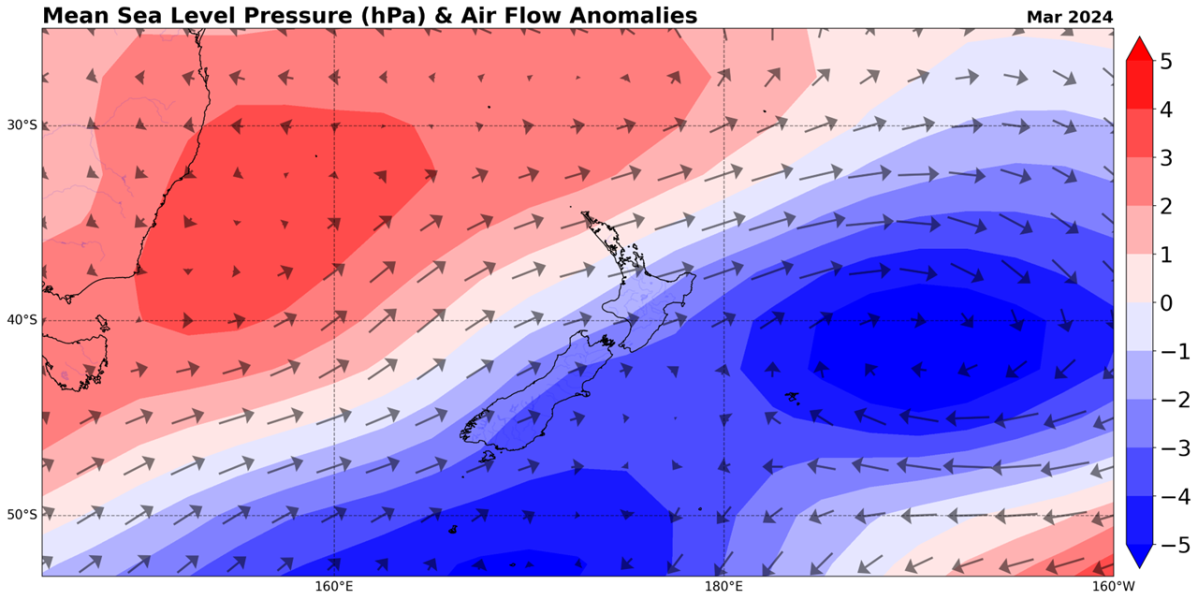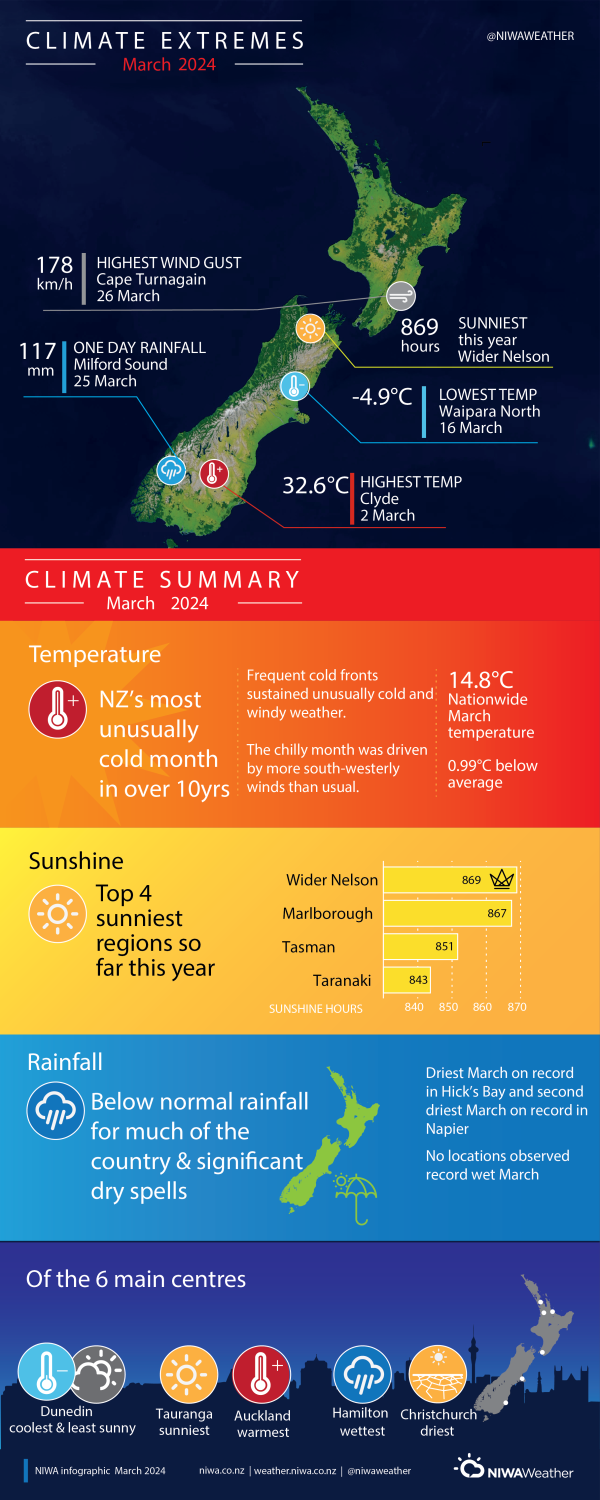| Temperature | Temperatures were below average (0.51-1.20°C below average) or well below average (>1.20°C below average) for most of the North Island and South Island, but near average temperatures (±0.50°C of average) were observed around Northland, East Cape, Tasman, Nelson, most of Marlborough, and north Canterbury. |
| Rainfall | Rainfall was below normal (50-79% of normal) or well below normal (<50% of normal) for the northern, eastern, and southern regions of the North Island, as well as much of the central and northern South Island. Above normal rainfall (120-149% of normal) was observed in parts of Waikato, Fiordland, and Southland, with near normal rainfall (80-119% of normal) also in parts of Waikato, Fiordland, and Southland. |
| Soil Moisture | At the end of March, soil moisture levels were lower than normal for much of the North Island excluding Waikato, along with the northern, central and eastern regions of the South Island. Soil moisture levels were above average in the southern South Island and a small area of Waikato. Elsewhere, soil moisture levels were near normal. |
March 2024’s nationwide mean temperature was 14.8˚C, 0.99˚C below average and Aotearoa New Zealand’s most unusually cold month in since January 2014, according to NIWA’s seven station temperature series which begins in 1909. It was also the coldest March since 2012. Since the start of 2014, there have only been 8 months during which the nationwide mean temperature was below average (more than 0.50˚C below the monthly average) – or 8 out of a possible 123 months.
The chilly month was driven by a double-barrel low pressure anomaly south and east of New Zealand working in tandem with a high-pressure area in the Tasman Sea to produce a southwesterly wind flow anomaly across the country. The pattern was a result of a stronger-than-normal and northerly-displaced polar jet stream. The sub-tropical jet was also positioned north of its climatological position, which meant that tropical air masses were largely absent from New Zealand. The pattern was consistent with a waning El Niño event in the equatorial Pacific Ocean.
Further Highlights:
- The highest temperature was 32.6°C, observed at Clyde on 2 March.
- The lowest temperature was -4.9°C, observed at Waipara North on 16 March.
- The highest 1-day rainfall was 117 mm, recorded at Milford Sound on 25 March.
- The highest wind gust was 178 km/h, observed at Cape Turnagain on 26 March.
- Of the six main centres in March 2024, Auckland was the warmest, Dunedin was the coolest and least sunny, Christchurch was the driest, Hamilton was the wettest, and Tauranga was the sunniest.
- Of the available, regularly reporting sunshine observation sites, the sunniest four locations so far in 2024 are wider Nelson (869 hours), Marlborough (867 hours), Tasman (851 hours), and Taranaki (843 hours).



